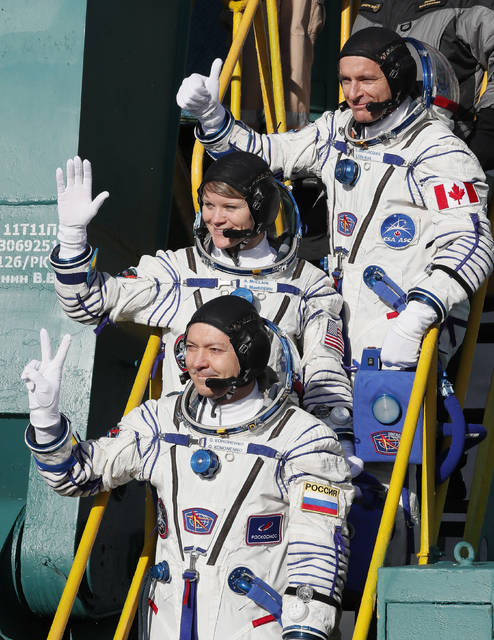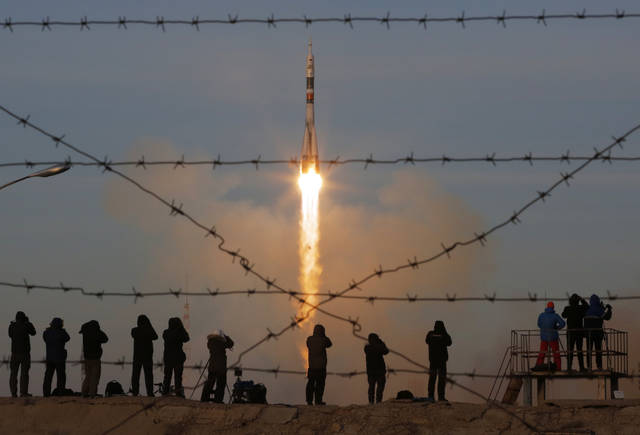BAIKONUR, Kazakhstan — A Russian Soyuz spacecraft carrying three astronauts successfully docked with the International Space Station on Monday following a clean launch from the Baikonur Cosmodrome in Kazakhstan six hours earlier.
NASA astronaut Anne McClain, David Saint-Jacques of the Canadian Space Agency and Oleg Kononenko of Russian space agency Roscosmos docked with the station at 11:33 p.m. (1733 GMT; 12:33 p.m. EST) Monday while flying over 250 miles (400 kilometers) above Ecuador.
Their Soyuz MS-11 spacecraft launched from Baikonur at 5:31 p.m. (1131 GMT; 6:31 a.m. EST) then entered a designated orbit just under nine minutes later. The spacecraft made four orbits over six hours as it chased down the space station for the docking.
The families of the crew, other astronauts and space officials from several nations breathed a sigh of relief after observing the flawless launch, with October’s Soyuz rocket failure still on the minds of many.
NASA and Roscosmos said all onboard systems were operating normally and the crew was feeling fine.
The crew must wait up to two hours while ground controllers verify that the latches and seals of the space station docking port are holding and that it’s safe to pop the hatch and go inside.
McClain, Saint-Jacques and Kononenko will spend more than six months at the space station doing research and experiments in biology, Earth science, physical sciences and technology.
The station’s current crew of NASA’s Serena Aunon-Chancellor, Russian Sergei Prokopyev and German Alexander Gerst were waiting to greet the newcomers. They are scheduled to return to Earth on Dec. 20.
A Soyuz-FG rocket carrying NASA astronaut Nick Hague and Roscosmos’ Alexei Ovchinin failed two minutes into its flight on Oct. 11, activating an automatic rescue system that sent their capsule into a steep ride back to Earth. They managed to emerge safely despite the harrowing ordeal.
A Russian investigation attributed the failure to a sensor that was damaged during the rocket’s final assembly.
The Soyuz accident in October was the first aborted crew launch for the Russian space program since 1983, when two Soviet cosmonauts safely jettisoned after a launch pad explosion.
Russian space officials took measures to prevent the repeat of such a rocket failure. Since the October mishap, four successful unmanned Soyuz satellite launches have been conducted to clear the path for the crew’s launch on Monday.
After Monday’s successful launch, NASA Administrator Jim Bridenstine tweeted his thanks to his Russian counterpart Dmitry Rogozin and to NASA and Roscosmos space teams “for their dedication to making this launch a success.”
The Soyuz spacecraft is currently the only vehicle that can ferry crews to the space station, but Russia stands to lose that monopoly in the coming years with the arrival of SpaceX’s Dragon and Boeing’s Starliner crew capsules.
———
Vladimir Isachenkov and Matthew Bodner in Moscow contributed to this report.



